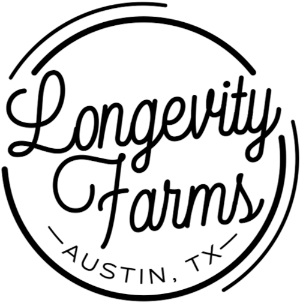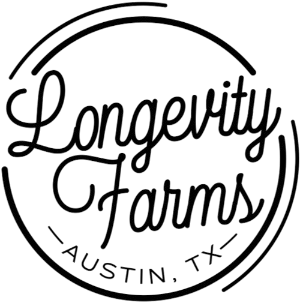If you’re wondering about the best time to start collecting colostrum, the general recommendation is to begin around 37 weeks of pregnancy. This is because knowing when to start collecting colostrum earlier can pose risks such as pre-term labor. In this article, we’ll guide you through the timing, techniques, and benefits so you can confidently prepare for your baby’s arrival.
Key Takeaways
-
Colostrum, produced starting around 16 weeks of pregnancy, is crucial for a newborn’s early development and immune support.
-
Colostrum harvesting should generally begin at 37 weeks of pregnancy, and it’s essential to consult healthcare providers for personalized guidance.
-
Proper techniques for hand expressing, safe storage, and addressing concerns can significantly enhance the effectiveness and benefits of colostrum collection.
Understanding Colostrum and Its Importance
Colostrum is the first milk your body produces around the 16th week of pregnancy. This thick, sticky, yellowish liquid might be small in quantity but is mighty in its benefits. Often called ‘liquid gold,’ colostrum is incredibly high in nutritional value, containing all the nutrients, antibodies, and antioxidants essential for your newborn’s early development and immune system support.
Colostrum plays a vital role in establishing breastfeeding, giving your newborn baby a strong start with their first milk. This early breast milk is tailored to meet the specific needs of newborns, providing a perfect blend of nutrients to kickstart their growth and development.
Colostrum also builds a robust immune system for your baby, packed with protective substances to guard against infections and illnesses, setting the stage for a healthy life. This small but powerful first milk is a crucial part of your baby’s early life, making the process of expressing colostrum antenatally highly beneficial.
Optimal Timing for Harvesting Colostrum
When it comes to colostrum harvesting, timing is key. Generally, collection should begin no earlier than 37 weeks of pregnancy to avoid the risk of pre-term labor. Your healthcare provider will typically provide collection tools around 36 weeks, giving you ample time to prepare and practice.
If you have a planned cesarean birth, discussing the timing of colostrum harvesting with your healthcare provider is crucial. They can guide you on when to begin expressing colostrum to ensure you have it ready when your baby arrives. In some cases, women may need to start earlier, especially if they face medical conditions that require it.
Collecting colostrum during pregnancy, in line with infant feeding guidelines, can significantly impact your baby’s initial feeding experiences. Starting at the right time can help avoid feeding problems and ensure a steady milk supply once your baby is born.
Consulting Healthcare Providers
Consulting your healthcare provider before starting colostrum harvesting is crucial. Midwives or doctors can offer personalized advice based on your medical history and current pregnancy status. If you have any doubts about expressing colostrum during pregnancy, they are the best source of information.
Understanding the risks involved, such as the potential for preterm labor, requires thorough discussion with a healthcare professional. Mothers at risk should particularly be cautious and seek tailored advice to ensure the safety of both mother and baby. Open communication with your healthcare team can ease concerns about milk supply and ensure you’re well-prepared for the process.
Should you experience cramping or discomfort while harvesting colostrum, stop immediately and consult your healthcare provider. This ensures that you and your baby remain safe throughout the process.
Techniques for Hand Expressing Colostrum
Hand expressing colostrum, though delicate, can be highly effective with the right techniques, including gentle breast massage. Begin by using warmth, like a warm flannel or bath, to aid the process. This helps relax the breast tissue and can make the process more comfortable.
Gently massage the breast, ensuring your fingers don’t slide over the skin to avoid discomfort. When ready, gently squeeze the breast, moving towards the nipple. Patience is key, as colostrum is typically expressed drop by drop. Regular sessions, starting with a few minutes once a day and gradually increasing, can stimulate more colostrum production.
Hand expressing colostrum is often recommended over using a pump, as the small quantities are better managed manually. This method allows effective collection without causing unnecessary stress or discomfort, making it easier to hand express.
Storing and Transporting Colostrum Safely
Properly storing and transporting colostrum is essential to maintain its quality and safety. Always use sterilized containers or syringes for collection. Label each container with your name, date of collection, and hospital number to ensure proper identification and tracking.
Frozen colostrum can be stored for extended periods if frozen immediately after collection. When you defrost it, make sure to use it within 24 hours and keep it refrigerated until needed. If you’re using a syringe for collection, refrigerate it for up to 24 hours before transferring it to the freezer.
Use a cool bag to transport colostrum to the hospital, maintaining its temperature and preventing spoilage. These precautions ensure your baby receives the highest quality colostrum, packed with nutrients and protective substances.
Addressing Common Concerns
Harvesting colostrum can bring up several concerns, but understanding the facts can help alleviate worries. One common concern is the risk of triggering premature labor. While colostrum harvesting can induce labor due to oxytocin release, it is unlikely to do so on its own. It’s always best to consult with your healthcare provider, especially if you have a history of premature labor.
Some worry about the effect of colostrum harvesting on future milk supply. Rest assured, this practice neither decreases nor increases milk supply once your baby is born. Regular practice of harvesting can stimulate more colostrum production, ensuring you have an ample supply for your newborn.
A stored supply of colostrum can be invaluable if your baby faces feeding difficulties post-birth. Rich in energy and immune support, it proves crucial during early feeding challenges. It can also prevent the need for formula supplementation if your baby requires extra feeds.
Benefits of Antenatal Expression for Specific Conditions
Antenatal colostrum harvesting is particularly beneficial for mothers with specific medical conditions. For instance, mothers with diabetes can prevent their newborns from needing NICU care by harvesting colostrum. This early supply of colostrum helps regulate the baby’s blood sugar levels, reducing the risk of complications.
Women with a history of high blood pressure or those on beta blockers may need to supplement feeds early on. Antenatal colostrum harvesting and antenatal expressing ensure they have a ready supply of this vital milk, supporting their baby’s health.
Mothers who have had breast surgery or face conditions like breast hypoplasia limiting breast development can also benefit from colostrum harvesting. This practice provides an early supply of colostrum, crucial for initial nutrition and immune support.
Preparing for Breastfeeding Challenges
Preparing for potential breastfeeding challenges can greatly influence your breastfeeding journey. Hand expressing colostrum during pregnancy helps mothers become familiar with their breast anatomy, easing the transition to breastfeeding. This practice is particularly beneficial for women expecting multiples, such as twins or triplets, ensuring adequate nutrition for their babies.
Colostrum can reduce bilirubin levels in newborns with jaundice, making antenatal colostrum harvesting particularly beneficial. For planned cesarean births, having colostrum ready can facilitate immediate feeding, reducing the need for formula.
Clearly labeling stored colostrum with your name, hospital number, and date ensures correct usage when needed. This preparation is crucial if your baby is at risk of feeding problems, providing peace of mind and the best start for your baby.
Resources and Support
Embarking on the journey of colostrum harvesting can be daunting, but numerous resources and support systems are available. Consult with healthcare providers such as doctors or midwives before starting to collect colostrum to ensure it is safe and appropriate for your situation. They can provide personalized advice and support, making the process smoother and more effective.
Using sterile containers or syringes for storing expressed colostrum and following guidelines for freezing and transporting to the hospital ensures the safety and quality of this precious first milk. Accessing these resources and support systems can help you confidently navigate colostrum harvesting.
Summary
In summary, colostrum harvesting is a valuable practice for ensuring your newborn receives the best start possible. From understanding colostrum’s importance and optimal timing for harvesting to consulting healthcare providers and mastering hand-expressing techniques, each step is crucial. Proper storage and addressing common concerns further ensure a smooth process. By preparing for breastfeeding challenges and leveraging resources and support, you can confidently embark on this journey. Empower yourself with knowledge and give your baby the best start with colostrum harvesting.
Frequently Asked Questions
When should I start collecting colostrum?
You should start collecting colostrum no earlier than 37 weeks of pregnancy to minimize the risk of pre-term labor.
How do I hand express colostrum?
To hand express colostrum, use a warm flannel to help relaxation, gently massage your breast, and squeeze towards the nipple, collecting the colostrum drop by drop. This method effectively promotes expression and ensures you can collect this vital fluid.
How should I store colostrum?
To preserve colostrum effectively, store it in sterilized containers or syringes. Label each with your name, date of collection, and hospital number, and freeze it immediately. This ensures its quality and safety for future use.
Can colostrum harvesting trigger labor?
Colostrum harvesting may trigger labor due to the release of oxytocin, but it is unlikely to induce labor independently. Always consult your healthcare provider for personalized advice.
What are the benefits of colostrum harvesting for specific conditions?
Colostrum harvesting offers significant benefits, including reducing the likelihood of NICU care for newborns, supporting mothers with high blood pressure, and aiding those with a history of breast surgery. This practice can enhance the overall health outcomes for both mother and baby.

